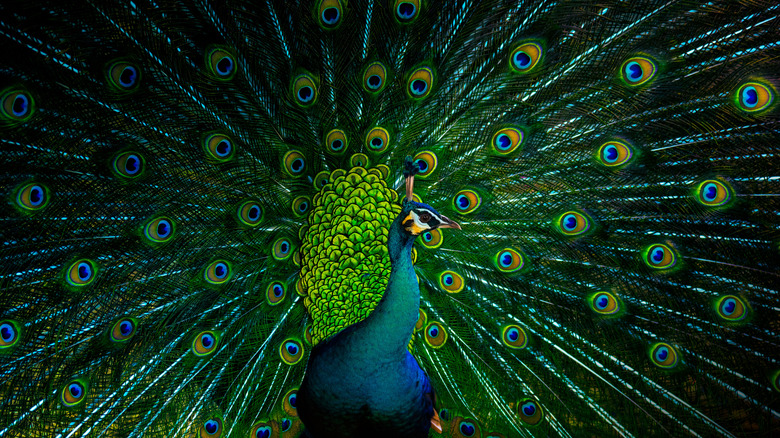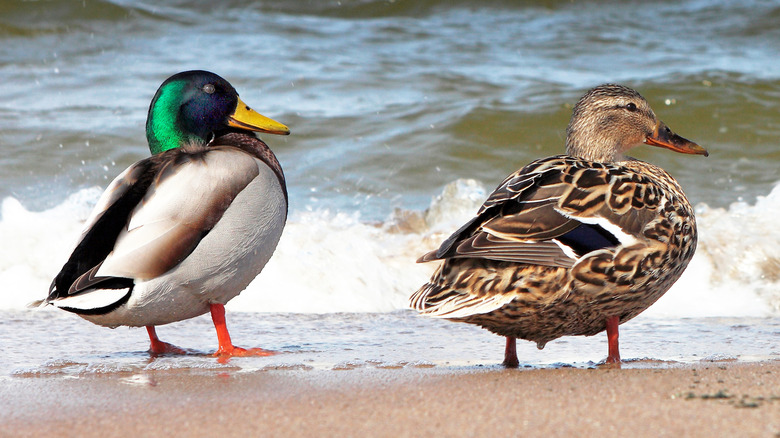Why Are Many Male Birds More Colorful Than Females?
Male birds are, by and large, more colorful and flamboyant than their female counterparts. Juxtaposed with the eye-catching features of a peacock, a gray-brown peahen is plain as can be. The same goes for the brown feathered head of a female mallard duck when compared to a male's emerald green crown. Of course, not every species of bird displays such dramatic sexual dimorphism, for example, the difference between male and female blue jays is barely discernible with the eye and requires a knowledge of their behavior to discern one from the other. But colorful males are generally the rule, and the more colorful they are, the better.
The colors seen on so many male birds are tools of natural selection, serving to attract potential mates. Brilliant plumage is associated with health and vitality. They can even signal a healthy diet. Yellow, orange, and red colors in birds are obtained through pigments called carotenoids found in many seeds, fruits, and insects. Thus, those colors indicate that the male is a good forager and fit to feed a family. Since male birds tend to outnumber females, colorful plumage is instrumental in fighting for the limited pool of mates.
But, a growing body of research is revealing that bird coloration is less straightforward than we long thought. A 2020 study published in Science revealed that in canaries, females have a gene that destroys pigment molecules, suggesting that females specifically evolved to not be colorful. This adaptation, though not as attention-grabbing, might actually be even more important than the colorful male plumage.
Why so many female birds look drab
For many male birds, colors are an advantage, but for their female counterparts, it's typically the opposite. Females typically bear the responsibility of incubating eggs, and they must keep watch over their nest nearly constantly. If these females were as brilliantly colored as their male mates, they would risk catching the eye of predators, and exposing the location of their nest and their vulnerable offspring. So, being drab is actually a crucial measure of protection that ensures future generations make it out of the shell alive and well.
A closer examination of relationship structures in different bird species reveals that color is not always a male trait. In some species, such as the button quail and Wilson's phalarope, the roles are flipped, with females having more vibrant plumage. In both species, the males are responsible for incubating the eggs while females bear responsibility for attracting a mate. This shows that pigment expression is not specifically a male or female trait, but rather linked to whichever parent is responsible for watching the eggs.
The rules of color are also different in bird species that form monogamous partnerships and share the duty of incubating eggs. When both birds parent as equals, they tend to have very similar pigmentation. This is seen in pairings of birds that mate for life, such as swans and bald eagles. But perhaps the best exceptions to the rule are love birds, a species in which males and females join in the colorful fun together.

